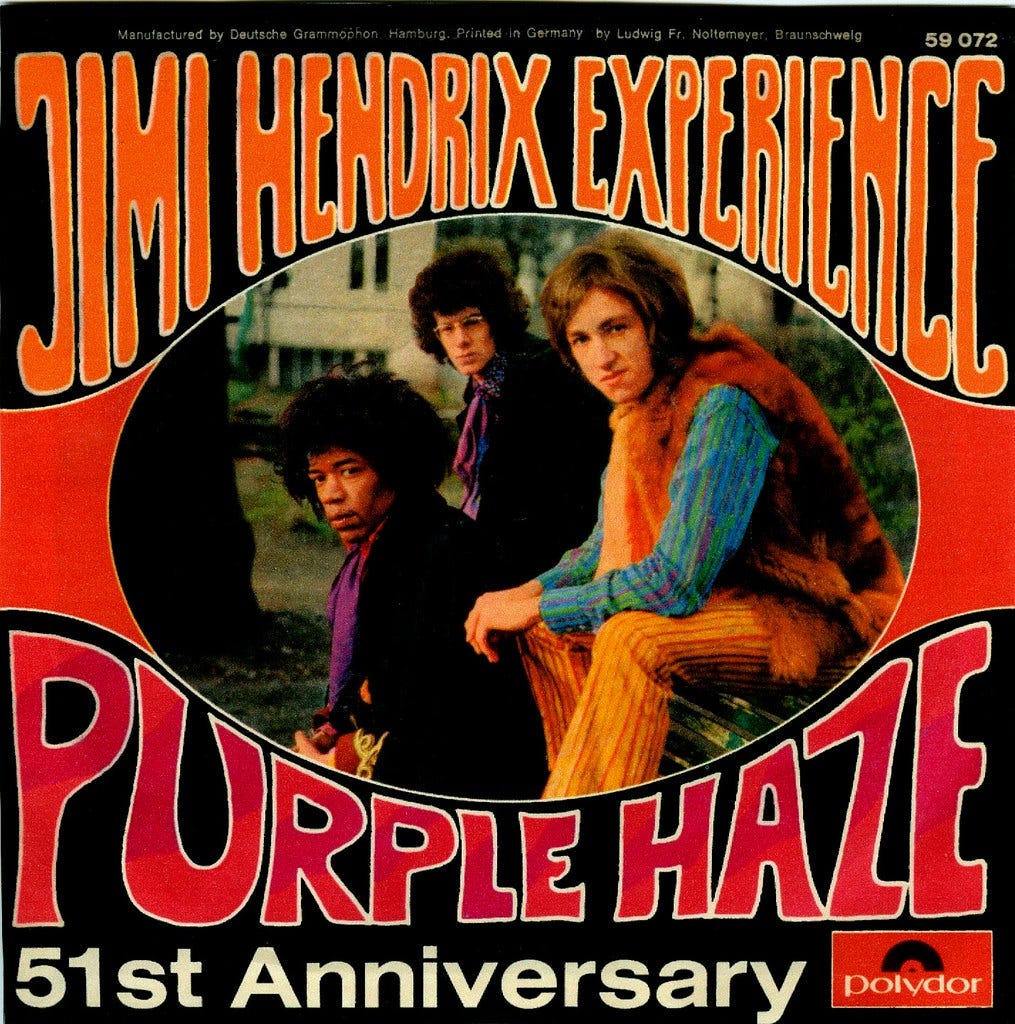Jimi Hendrix’s “Purple Haze”: The Story of a Song
The Creation of a Rock Masterpiece, From Inspiration to Release
By skill and kismet, Jimi Hendrix landed in the right place at exactly the right moment – London, England, in late September 1966. Making every moment count, he organized one of rock’s first power trios, the Jimi Hendrix Experience, with Noel Redding on bass and Mitch Mitchell on drums. Within a few months he’d composed an enduring body of songs – “Stone Free,” “Purple Haze,” “Foxey Lady,” “Fire,” “The Wind Cries Mary,” “Highway Chile,” “Manic Depression,” “May This Be Love,” “I Don’t Live Today,” and “Are You Experienced” among them. He became a fashion trendsetter, inveterate jammer, and major concert draw, stunning audiences with his unprecedented volume, flamboyant outfits, and over-the-top stage moves. Most of all, Jimi remained intensely focused on his music.
As he spent his first Christmas in London, Jimi had much to be thankful for. In just three months he’d accomplished more musically than he had in all the years leading up to his arrival in the U.K. He’d fronted his own band in England, France, and Germany; recorded several of his own compositions; attracted the support of the brightest stars in Britain’s rock galaxy; and was gaining recognition in the British press.
The Experience were booked to play northeast London’s Upper Cut Club, co-owned by boxer Billy “Golden Boy” Walker and his brother Phil, on the day after Christmas. Housed in a former ice-skating rink, the cavernous venue, described in the Stratford Express as “a plush, big beat palace,” was celebrating its opening week. Promoting the Monday events as “Boxing Day, for All the Family,” the Upper Cut’s ad listed the Experience as the afternoon matinee attraction, for an admission price of five shillings for the gentlemen and three for the ladies. By contrast, admission to the Pretty Things’ evening performance cost twelve shillings and ten shillings.
While waiting in the dressing room for their 4:00 PM start, Jimi completed writing what would become one of his most beloved songs, “Purple Haze.” According to his roommate/manager Chas Chandler, Hendrix had come up with the song’s distinctive riff about ten days earlier. “That afternoon at the Upper Club,” Chandler recounted, “he started playing the riff in the dressing room. I said, ‘Write the rest of it,’ so he did.” Jimi began the song with tri-tones – the so-called “devil’s interval” eschewed by medieval composers – and then centered the song around an E♭7♯9, which has become known as the “Hendrix chord.”
Keep reading with a 7-day free trial
Subscribe to Talking Guitar ★ Jas Obrecht's Music Magazine to keep reading this post and get 7 days of free access to the full post archives.




